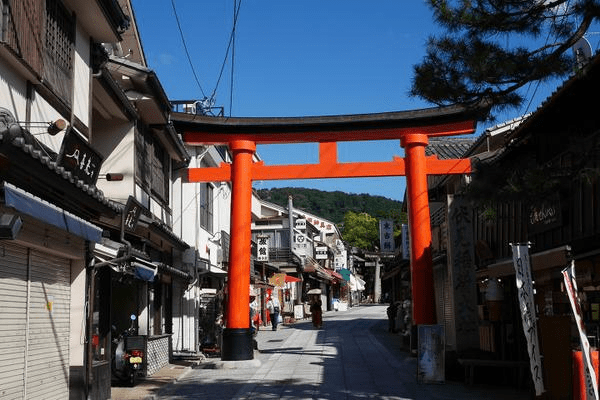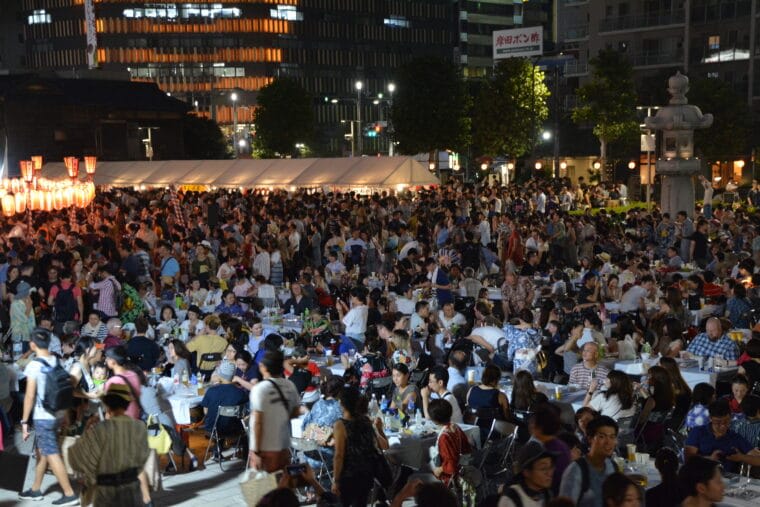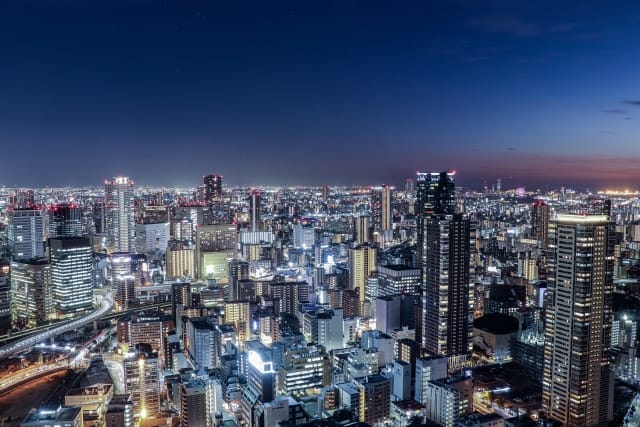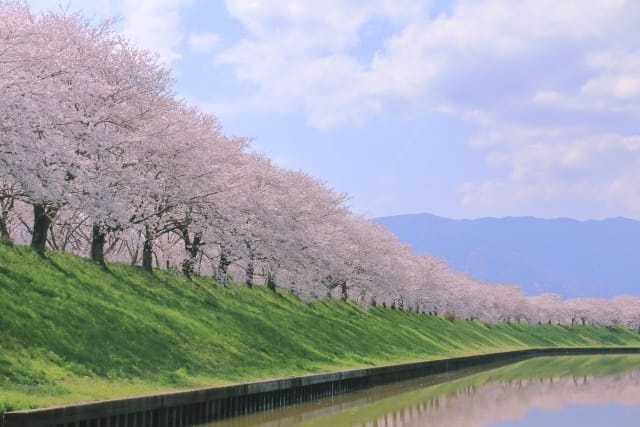Kyoto Osaka Perfect Itinerary 2025: 3-Day Plan & Customize Idea for your Interest
Kyoto and Osaka - where ancient charm meets modern bustle. A 3-day journey through Kansai's two major cities offers a luxurious experience of contrasting "Japanese and Western" and "tradition and innovation."
Through my 10 years of living in Osaka, I have come to understand the charm of these two cities more deeply.
Kyoto's World Heritage temples and shrines show different faces with each season, offering new discoveries no matter how many times you visit. Cherry blossoms in spring, fresh greenery in summer, autumn leaves, and snow scenes in winter—the beauty of the four seasons never loses its value, even with the large number of tourists.
Meanwhile, Osaka, amid its vibrant cityscape, actually breathes with the taste of long-established shops and the warmth of people's hospitality.
In this article, I will introduce an efficient itinerary to fully enjoy the charm of both cities. I'll guide you through a fulfilling 3-day journey while sharing local tips that only residents know!
Magical Trip offers guided tours in both Kyoto and Osaka where local guides take you to restaurants and bars beloved by locals. Due to its popularity, Magical Trip was ranked as Tripadvisor's #1 tour in 2024.
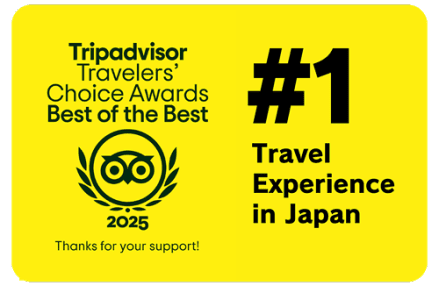
We offer various types of tours, so please join one that matches your interests!
KYOTO Tours:
・Kyoto Night Foodie Tour
・Kyoto Bar Hopping Nightlife Tour in Pontocho
・Fushimi Inari Hidden Hiking Tour
OSAKA Tours:
・Osaka Local Foodie Tour in Dotonbori and Shinsekai
・Osaka Bar Hopping Night Tour in Namba
・5-Hour Osaka Highlights Bike Tour with Lunch
We hope you'll have a wonderful time experiencing everything both cities offering by joining a Magical Trip tour!
Table of Contents
・What Makes Kyoto and Osaka Special?
・Key Points for 3-Day Kyoto and Osaka Tour
・Day 1: Exploring Kyoto's World Heritage Sites
・Day 2: Enjoying Kyoto's Nature
・Day 3: Experiencing Osaka to the Fullest
If you're interested in restaurants you can enjoy Kyoto’s traditional food, Check the article below.
・The Ultimate Guide to Pontocho: Kyoto's Most Enchanting Alley
If you're interested in "Famous Food Street in Osaka", Check the article below.
・Kuromon Market Guide: The Ultimate Guide to Osaka's Kitchen
What Makes Kyoto and Osaka Special?

Kyoto and Osaka are Kansai's two major cities where Japanese traditional and modern culture harmoniously blend.
Osaka is known as the "city of food lovers," rich in casual and delicious B-grade gourmet food. On the other hand, Kyoto, with its numerous World Heritage sites like Kinkaku-ji and Kiyomizu-dera, embodies the very image of "Japan" that many foreigners envision.
What's particularly noteworthy is that these two attractive cities are just 30 minutes to an hour apart by train. The convenience of being able to enjoy top-ranked tourist destinations in just a few days is unparalleled worldwide.
Key Points for 3-Day Kyoto and Osaka Tour
Next, I'll introduce important points to consider when touring Kyoto and Osaka over three days.
Spend More Time in Kyoto
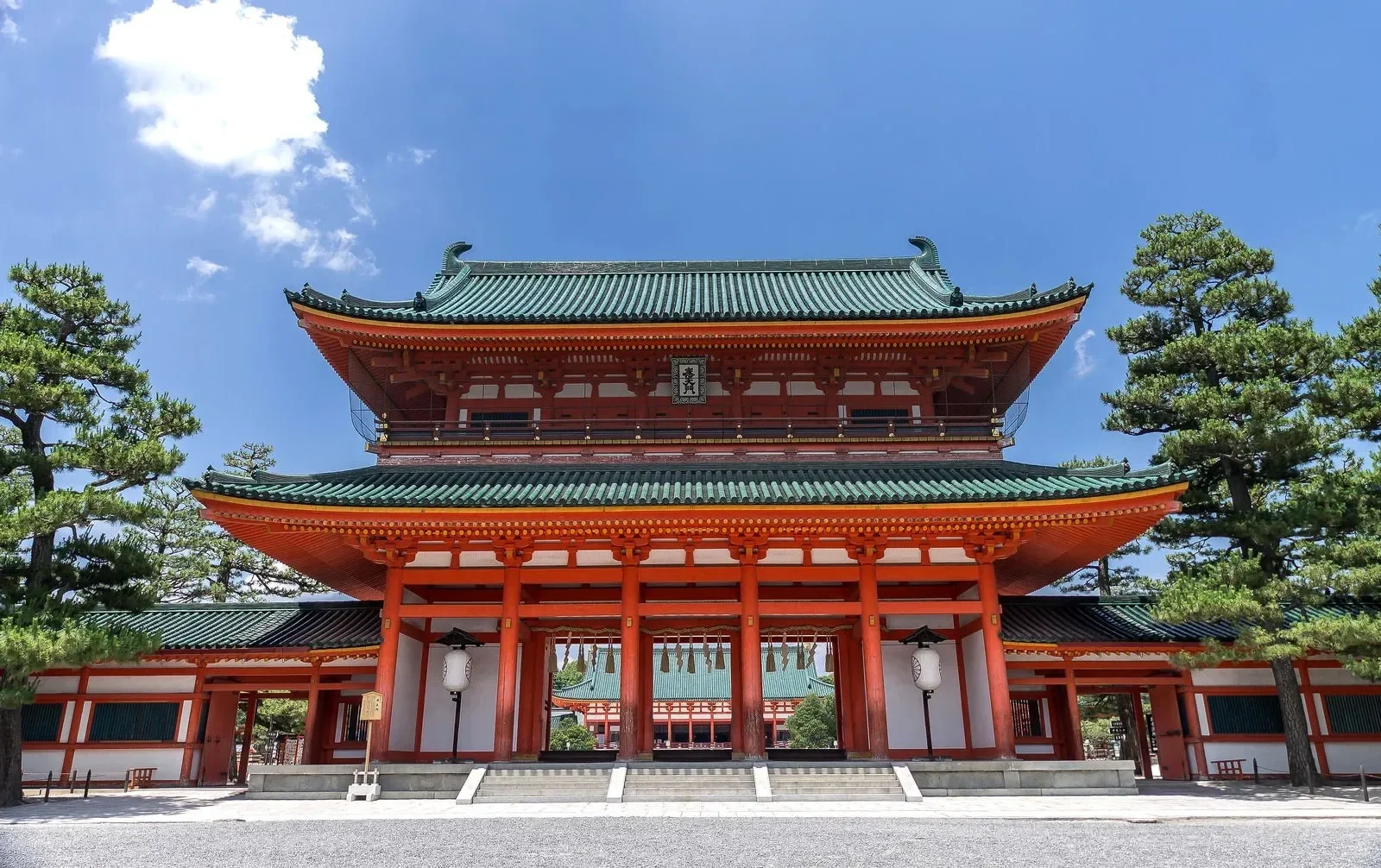
When planning a Kyoto and Osaka tour, I first consider time allocation.
Osaka is a relatively compact city where major tourist spots can be efficiently accessed by subway. Meanwhile, Kyoto's temples and shrines are scattered throughout the city, primarily requiring bus and walking transportation.
Also, since there are overwhelmingly more attractions than in Osaka, I recommend allocating more time to Kyoto.
Dedicate a Full Day if Visiting USJ
Source: Google Map
As a USJ annual pass holder, I am well-versed in the park's attractions.
While this itinerary doesn't include a USJ visit, if you plan to go, I strongly recommend using a full day. The vast grounds contain numerous attractions and points of interest that can't be fully appreciated in just half a day.
More Detailed Information About "Perfect Guide to USJ"
・Universal Studios Japan: Tips for Maximizing Your Visit (w/ Opening Hours & Maps)
Spring and Autumn are the Best Seasons
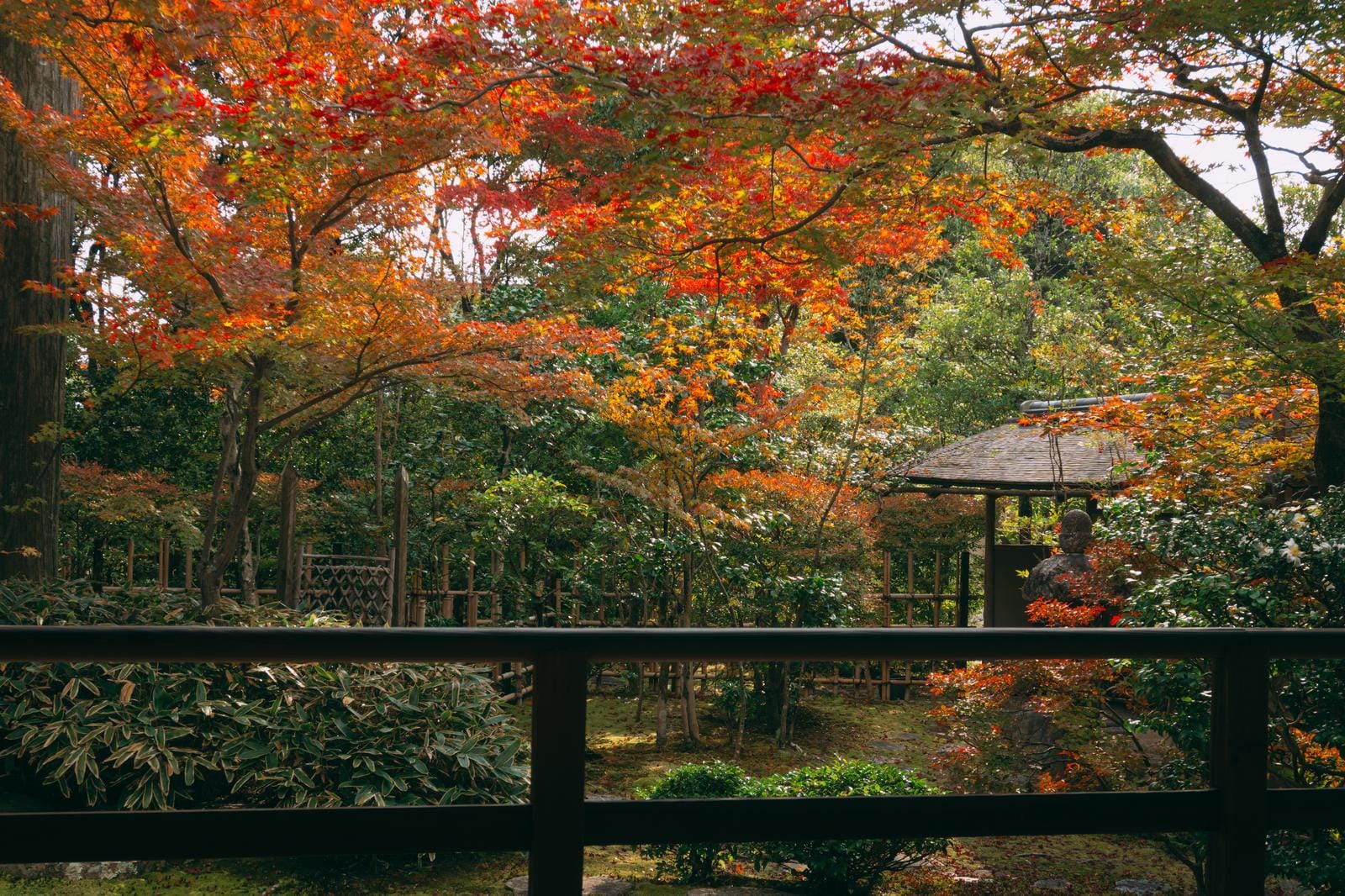
The best seasons for Kyoto sightseeing are spring, when cherry blossoms reach full bloom in early April, and autumn, when fall colors peak around November. While these seasons attract many tourists, the beauty makes you forget about the crowds.
During other seasons, when Kyoto's charm is slightly reduced, considering substituting one day for USJ is an option.
More Detailed Information About "Beautiful Cherry Blossoms in Kyoto"
・Kyoto's Cherry Blossoms: 10 Best Sakura Spots 2025
More Detailed Information About "Colorful Autumn Foliage in Kyoto"
・Autumn Leaves in Kyoto: 10 Best Fall Foliage Spots 2025
Day 1: Exploring Kyoto's World Heritage Sites
Here's my detailed 3-day itinerary. Day one focuses on Kyoto's iconic spots.
Morning (AM8:30-PM12:00): Fushimi Inari Shrine

On your first day of Kyoto sightseeing, I recommend visiting Fushimi Inari Shrine first thing in the morning. It's just 5 minutes from Kyoto Station to Inari Station. By visiting early morning, you can photograph the Instagram-famous thousand torii gates without crowds.
The hike to the summit is a 2-3 hour round trip, but along the way, you'll encounter torii gates of various sizes, creating a mystical atmosphere.
I've visited many times, but I discover new photo spots each time. Admission is free, and you can purchase lucky charms and commemorative shrine stamps within the grounds.
Website: https://inari.jp/en/
More Detailed Information About "Sightseeing in Fushimi Inari Shrine"
・Fushimi Inari Shrine Highlight and History! Discover Hidden Gems Surrounding Fushimi Inari Taisha
If you're interested in "Sake Brewery in Fushimi", Check the article below.
・Fushimi Sake District Perfect Guide: Local's Tips to Enjoy Fushimi Sake Village
If you want to easily enjoy Fushimi Inari Shrine, it's also recommended to have a guide who knows Kyoto inside out show you around.
By joining a Magical Trip tour, you can fully enjoy Fushimi's Hidden Gems and mystical Spots in Fushimi.
・Fushimi Inari Hidden Hiking Tour
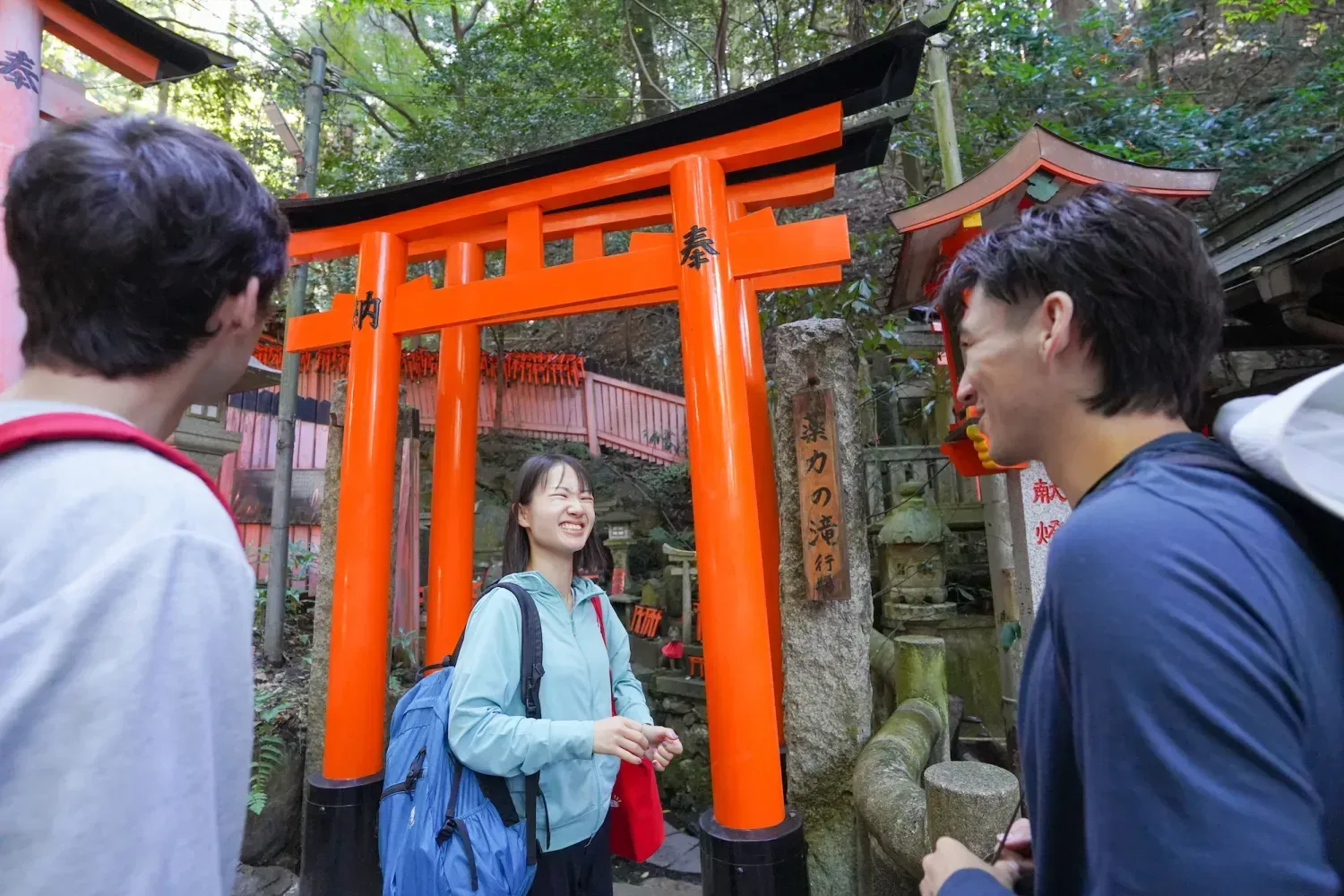
Three Spots to Visit Along with Fushimi Inari Taisha
Visiting Fushimi Inari Taisha typically takes about 2-3 hours, including the time spent walking the mountain paths lined with torii gates.
Since exploring all the trails can be quite time-consuming, if your time in Kyoto is limited, we recommend a shorter 30-minute route that takes you through the Senbon Torii (Thousand Torii Gates) to the main worship hall.
Near Fushimi Inari Taisha, there are places where you can explore historic temples and charming streetscapes. If you have extra time, consider visiting any of the three spots introduced below that appeal to you. These locations work perfectly as part of an Osaka, Kyoto & neighbors 3-day itinerary, allowing you to experience the rich cultural heritage of the region.
Tōfuku-ji Temple

Tōfuku-ji Temple, accessible on foot from Fushimi Inari Taisha, is one of Kyoto's representative Zen temples. Founded in 1236, it is known as a "Daihonzan" (head temple) that oversees temples of its sect. Within the temple grounds stands Japan's oldest Sanmon (temple gate), whose impressive architecture has been designated as a National Treasure.
The autumn foliage view from Tsuten-kyo Bridge, which spans across a ravine, is particularly famous, attracting many visitors during fall. When I visited, I was breathless at its overwhelming beauty.
Address: 15-778 Honcho, Higashiyama-ku, Kyoto City, Kyoto Prefecture
Operating Hours: 9:00 AM - 4:00 PM
Closed: No regular holidays
Phone Number: 075-561-0087
Official Website: https://tofukuji.jp/
Daigo-ji Temple
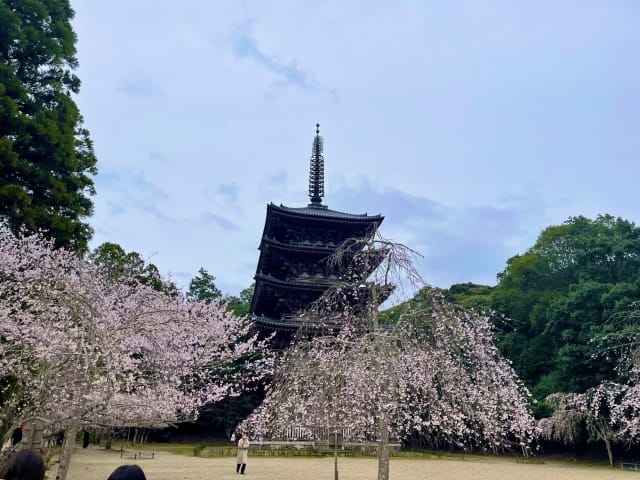
Daigo-ji Temple is a large Buddhist temple of the "Shingon sect" that is registered as a UNESCO World Heritage Site. Located about 30 minutes by train from Fushimi Inari Taisha, the expansive temple grounds contain numerous buildings designated as National Treasures and Important Cultural Properties.
Among these, the five-story pagoda, built in 951, is Kyoto's oldest wooden structure and serves as the temple's iconic symbol. The spring cherry blossoms are particularly beautiful, and the gardens that change their appearance with each season are also worth seeing. Most of the buildings are Important Cultural Properties that truly convey Kyoto's history, and I was overwhelmed by their magnificence.
Address: 22 Daigo Higashioji-cho, Fushimi-ku, Kyoto City, Kyoto Prefecture
Operating Hours: 9:00 AM - 5:00 PM
Closed: None
Phone Number: 075-571-0002
Official Website: https://www.daigoji.or.jp/
If you're interested in "Beautiful Cherry Blossoms in Spring", Check the article below.
・Kyoto's Cherry Blossoms: 10 Best Sakura Spots 2025
Fushimi Inari Sando Shopping Street
source:Yahoo! Travel
When visiting Fushimi Inari Taisha, be sure to stop by the shopping street that stretches along the path leading to the temple. Along the street, you'll find shops perfect for food tasting and long-established Japanese sweets stores.
Among these, we particularly recommend "Inarizushi," a type of sushi dish. Inarizushi consists of vinegared rice wrapped in thin, fried tofu. It's considered a lucky charm because foxes, who serve as messengers of Fushimi Inari Taisha, are said to favor this fried tofu.
We also recommend "Senbei," traditional Japanese baked confections shaped like fox faces. Their striking appearance makes them perfect as souvenirs.
Address: Fukakusa Kaido-cho, Fushimi-ku, Kyoto City, Kyoto Prefecture
Operating Hours: Varies by store
Closed: Varies by store
Phone Number: Varies by store
Official Website: http://www.fusimi-inari.com/
More Detailed Information About "Historic Shrines & Temples in Kyoto"
・Top 9 Best Temples and Shrines; Must-Visit for First-Timers!
Afternoon (PM1:30-5:00): Kiyomizu-dera Area
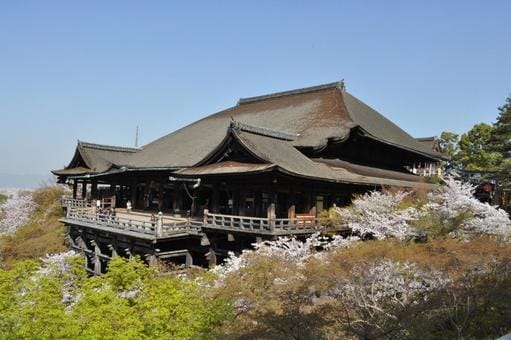
Return to Kyoto Station from Fushimi Inari, take the subway to Shijo Station, then transfer to the Hankyu train to Kyoto-Kawaramachi Station. I recommend walking from the station to Kiyomizu-dera through the atmospheric Gion district.
Make sure to stop by Yasaka Shrine along the way. At Kiyomizu-dera, first enjoy the view from the famous Kiyomizu Stage. During cherry blossom or autumn leaf seasons, I recommend extending your visit to nearby Kodai-ji Temple.
Don't forget to explore Ninenzaka and Sannenzaka slopes on your way back, where you can experience old Kyoto's atmosphere.
Website: https://www.kiyomizudera.or.jp/en/
More Detailed Information About "Highlights of Kiyomizu-dera"
・Enjoy Kiyomizu Dera Temple! Highlights, Best Photo Spots, and More...
If you want to easily enjoy Kiyomizudera and Japanese Culture, it's also recommended to have a guide who knows Kyoto inside out show you around.
By joining a Magical Trip tour, you can fully enjoy around Kiyomizudera and Tea Ceremony.
・Kyoto Tea Ceremony & Kiyomizu-dera Temple Walking Tour
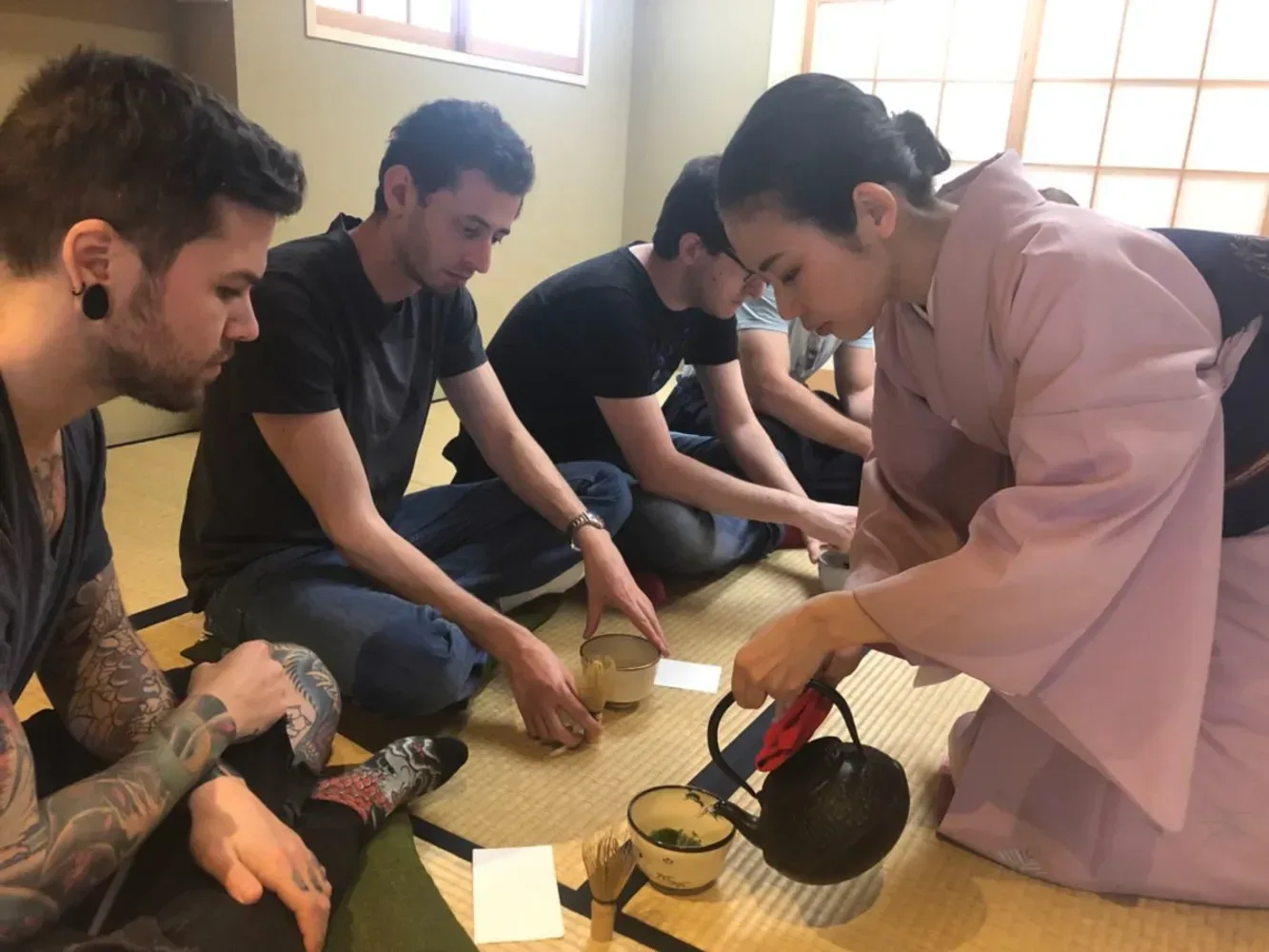
Three Spots You'll Want to Visit Together with Kiyomizu Temple
Visiting Kiyomizu Temple, including the temple's famous stage, main buildings, and Otowa Falls, typically takes about 1 hour.
However, since it's a popular tourist destination with many visitors, you may need extra time for worship and photography, so it's recommended to plan for a bit longer.
While it might be difficult to visit all the surrounding famous spots in one go, if you have some extra time as part of your Osaka, Kyoto & neighbors 3-day itinerary, please consider visiting the spots we'll introduce below.
Hōkan-ji Temple (Yasaka Pagoda)

Many people have probably seen the iconic five-story pagoda that symbolizes Kyoto. This pagoda is called "Yasaka Pagoda" and is located within Hōkan-ji Temple. The approximately 46-meter-tall five-story pagoda towers above the cityscape and appears in many photographs as a representative landscape of Kyoto's Higashiyama area.
Founded in 592, it has a long history and has undergone several fires and reconstructions, with the current structure rebuilt in 1440. The interior can only be viewed during special public openings, but the exterior alone has a strong presence, and the scenery harmonizing with the stone-paved roads allows you to fully enjoy Kyoto's distinctive atmosphere. No matter how many times I see this view, it always makes me feel "Kyoto is truly beautiful." It's truly a landmark existence.
Address: Kyoto City, Higashiyama Ward, Yasaka Toriimae Shimokawara-cho Higashi-iru
Business Hours: 10:00-15:00 (Children under 12 cannot enter due to steep stairs)
Closed: Irregular holidays
Phone: 075-551-2417
Official Website: None
More Detailed Information About "Guide to Yasaka Shrine"
・Yasaka Jinja Shrine: A Comprehensive Guide
Yasaka Kōshin-dō Temple
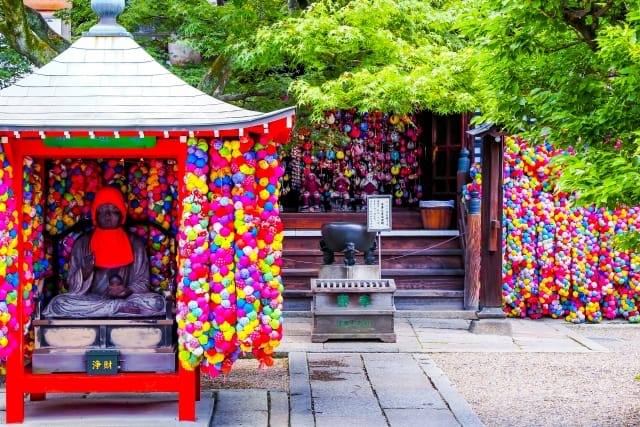
Yasaka Kōshin-dō Temple is a small temple within walking distance of Kiyomizu Temple, known for its colorful charms called "Kukurizaru" (meaning "Tied-up monkey"). Kukurizaru are shaped like monkeys with their hands and feet bound, and it's believed that by suppressing one desire, one wish will come true.
The countless colorful fabric monkeys with written wishes hanging throughout the temple grounds are photogenic and popular as a photo spot for tourists. I also rented a Japanese summer kimono "Yukata" nearby, had it put on at the shop, and took commemorative photos here.
Address: 390 Kinen-cho, Higashiyama Ward, Kyoto City, Kyoto Prefecture
Business Hours: 9:00-17:00
Closed: None
Phone: 075-541-2565
Official Website: http://www.yasakakousinndou.sakura.ne.jp/
More Detailed Information About "Recommended Photo Spots in Kyoto"
・Photo Spots in Kyoto; 10 Best Instagrammable Places
Yasui Kompiragū Shrine
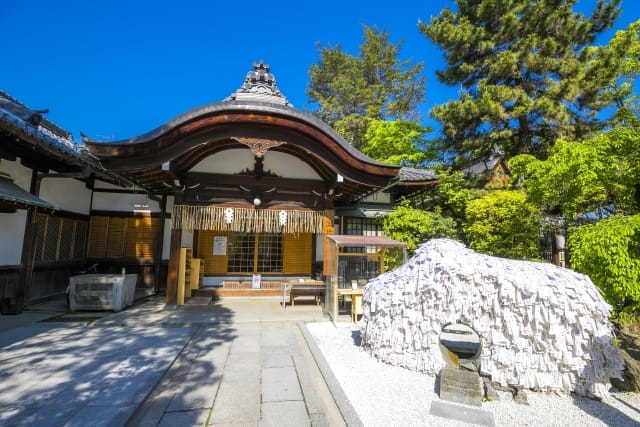
Yasui Kompiragū Shrine is a small shrine in the Higashiyama area, known for its benefits in cutting off bad relationships and finding good encounters. There's a large stone on the grounds, and it's said that by crawling through the hole in the center while making a wish, you can cut off bad relationships and invite new good relationships.
The surface of the stone is covered with many papers on which wishes have been written. It's believed to bring benefits not only for romance but for cutting off anything you want to eliminate from your life, such as illness or bad habits, and worshippers from both Japan and abroad visit here.
I've visited here before, and the inside of the stone was narrower than I imagined—crawling through it gave me a strange feeling. It's surely a spot that will give you a push forward when you want to move ahead positively.
Address: 70 Shimobenten-cho, Higashiyama Ward, Kyoto City, Kyoto Prefecture (Higashi-oji Matsubara Agaru)
Business Hours: All day
Closed: None
Phone: 075-561-5127
Official Website: http://www.yasui-konpiragu.or.jp/
Evening (PM6:00-9:00): Gion Exploration

Take a leisurely 20-30 minute walk back to Kawaramachi from Kiyomizu-dera. Gion at night has a different, magical atmosphere from daytime. The illuminated Yasaka Shrine is particularly stunning.
In Pontocho and Hanamikoji, you might be lucky enough to encounter maiko (apprentice geisha). However, calling out to or photographing maiko is strictly prohibited. Please observe proper manners and don't interfere with their professional work.
More Detailed Information About "Sightseeing around Gion"
・Kyoto Gion Guide: Things to Do and Travel Guide of Kyoto's Traditional neighborhood
If you want to easily enjoy Arashiyama, it's also recommended to have a guide who knows Kyoto inside out show you around.
By joining a Magical Trip tour, you can fully enjoy around Bamboo Grove and Temples.
・Dinner with Maiko in a Traditional Kyoto Style Restaurant Tour
・Kyoto Bar Hopping Nightlife Tour in Pontocho

Day 2: Enjoying Kyoto's Nature
Kyoto is actually rich in natural beauty. Day two is a luxurious schedule enjoying both Kyoto's nature and traditions.
Morning (AM8:30-PM2:30): Arashiyama Exploration

It's about 15 minutes from Kyoto Station to Saga-Arashiyama Station on the JR San-in Line. I recommend visiting the Bamboo Grove first thing in the morning. Early morning has fewer tourists, allowing you to fully enjoy the quiet dignity of the bamboo forest.
Then, take photos at Arashiyama's symbol, the Togetsukyo Bridge. The view of the Hozu River and mountains from this atmospheric bridge is spectacular. At the World Heritage Tenryu-ji Temple, you can appreciate the beautiful dry landscape garden.
If you have extra time, I recommend visiting Iwatayama Monkey Park. Here, you can observe wild Japanese macaques up close and enjoy a popular viewpoint overlooking Kyoto's cityscape.
More Detailed Information About "Sightseeing around Arashiyama"
・Kyoto Arashiyama Perfect Guide: Famous Spots, Hidden Gems, and Restaurants
If you want to easily enjoy Arashiyama, it's also recommended to have a guide who knows Kyoto inside out show you around.
By joining a Magical Trip tour, you can fully enjoy around Bamboo Grove and Temples.
・Kyoto Arashiyama Bamboo forest & Garden Half-Day Walking Tour

Afternoon (PM2:30-5:00): Uji Exploration
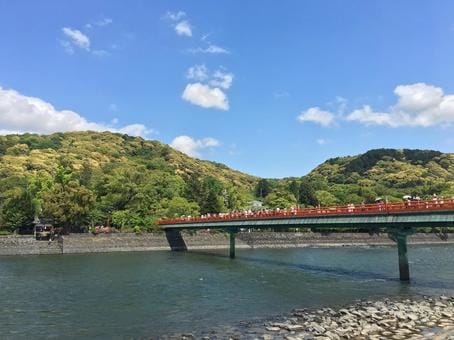
After exploring Arashiyama, return to Kyoto Station on the JR San-in Line, then transfer to the Nara Line to Uji Station. Uji is known as one of Japan's premier matcha-producing regions.
Here, you can visit the Byodoin Phoenix Hall, which appears on the 10-yen coin. The majestic Buddhist hall and beautiful garden seem to recreate paradise on earth.
After your visit, I recommend enjoying sweets and drinks made with Uji matcha in the surrounding area.
For the second night, I recommend staying at a hotel in Osaka to prepare for the next day's Osaka sightseeing. Considering travel time from Kyoto to Osaka, this is more efficient.
For more about this area, check out the [Uji Guide] article.
More Detailed Information About "Recommended spots in Uji"
・Uji Perfect Guide: Immerse in Kyoto's History, Nature, and Tea Culture
Three Tourist Destination Candidates Other Than Uji
While Uji can be explored in approximately 3 hours covering its main spots, Kyoto has many other unmissable tourist destinations scattered throughout the area. These locations work perfectly as part of an Osaka, Kyoto & neighbors 3-day itinerary. I'll introduce each location along with the time needed for sightseeing, so please feel free to rearrange your travel plans according to your interests.
Around Kinkakuji
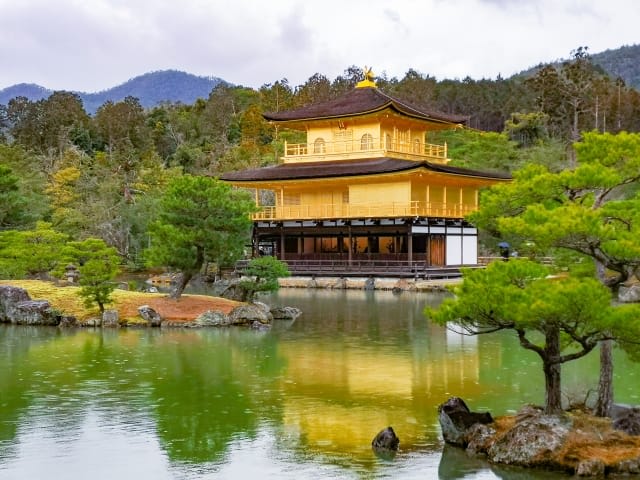
Estimated time needed for sightseeing: 2-3 hours
Kinkakuji Temple - Ryoanji Temple - Kitano Tenmangu Shrine Area
Around Kinkakuji Temple, historic temples and shrines are scattered within walking distance. Kinkakuji Temple is one of Kyoto's premier attractions, famous for its golden building reflected in the pond. This temple was built in 1397 by Yoshimitsu Ashikaga, who was the ruler of Japan at that time. It displays different beauty in each season, with the snow-covered scenery being particularly magical.
Ryoanji Temple, located within walking distance, is famous for its stone garden. The garden features 15 stones of various sizes arranged on white sand, designed so that one stone is always hidden from view regardless of your viewing position, said to represent "incompleteness."
Nearby is also Kitano Tenmangu Shrine, which enshrines Sugawara no Michizane, a scholar who lived around 900 AD and is considered the god of learning, making it popular among students. It's also known as a famous plum blossom spot, with flowers blooming magnificently across the area around February.
I once visited during plum season and enjoyed "Awamochi" - rice cakes made from pounded millet filled with sweetly boiled azuki beans - at a long-established shop nearby.
More Detailed Information About "Highlights of Kinkakuji Temple"
・Visiting Kinkakuji Temple: The Golden Pavilion in Kyoto
Around Nanzenji
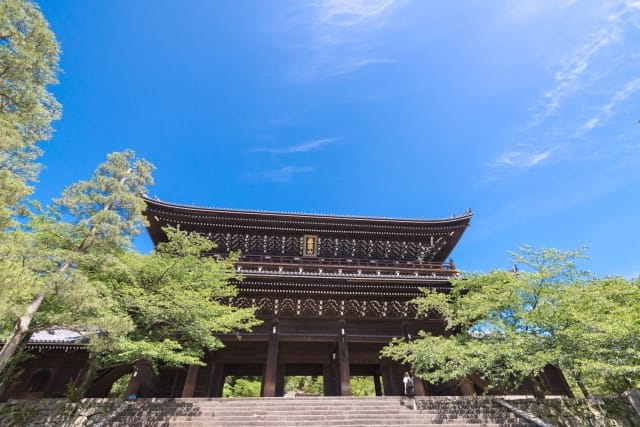
Estimated time needed for sightseeing: 4-5 hours
Nanzenji Temple - Nijo Castle - Ginkakuji Temple - Kyoto International Manga Museum Area
Nanzenji Temple is a temple founded in 1291, where you can see numerous important cultural properties in a nature-rich environment. The gate is particularly famous and is considered one of Japan's three great Sanmon (a type of gate commonly seen at Buddhist temples).
The brick aqueduct remaining within the temple grounds is also popular as a photo spot, and I took commemorative photos under the brick arches myself.
In this surrounding area, you'll also find Nijo Castle, built in 1603 by Ieyasu Tokugawa, Japan's top leader at the time, and Ginkakuji Temple, which serves as a counterpart to Kinkakuji Temple and is characterized by understated, simple beauty.
Nijo Castle regularly hosts illumination and projection mapping events, where you can enjoy magical and artistic spaces.
At the Kyoto International Manga Museum, you can freely browse the world's largest manga collection and fully enjoy Japanese culture.
More Detailed Information About "Guide to Nanzenji Temple"
・Nanzenji Temple; Kyoto Sightseeing Guide
More Detailed Information About "Sightseeing around Anime Spots in Kyoto"
・Anime Spots in Kyoto! 8 Pilgrimage Places for Otaku (Manga Lovers)
Around Kyoto Station
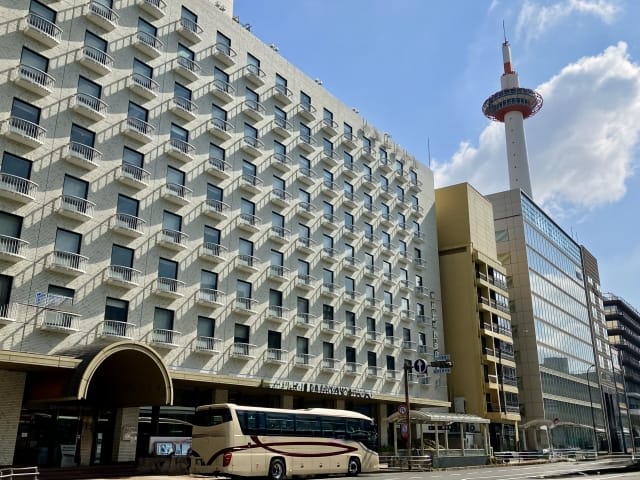
Estimated time needed for sightseeing: 2-3 hours
Kyoto Station serves as a transportation hub while the architecture itself is one of the attractions. The open atrium and futuristic design of the station building are popular as photography spots.
Within walking distance, you'll find Higashi Honganji Temple with its impressive wooden architecture, and To-ji Temple with its five-story pagoda that symbolizes Kyoto, where you can feel history and tradition.
Additionally, the station building houses numerous restaurants, cafes, and shops where you can purchase Kyoto-style Japanese sweets and crafts, making it convenient for meals and souvenir shopping during your travels. When I want to buy souvenirs, I explore several shops within the station building to find what I'm looking for.
More Detailed Information About "Features on Kyoto Station"
・Kyoto Station Guide: Enjoying Modern Architecture in Kyoto
・Access to Kyoto; Complete Guide to Kyoto Station
Day 3: Experiencing Osaka to the Fullest
Let's fully enjoy the compact city of Osaka on the final day.
Morning (AM10:00-PM12:00): Kaiyukan Aquarium
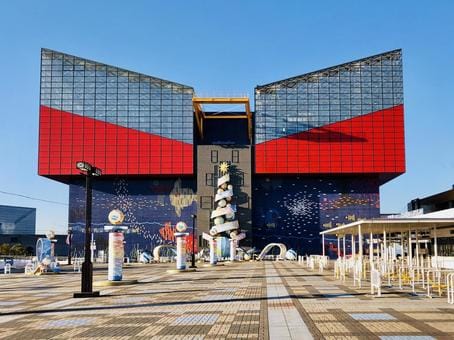
On the final day of your journey, it's time to fully experience Osaka's charm. First, take the subway from Osaka Station to "Osakako" Station. At Kaiyukan, one of the world's largest aquariums, you can encounter marine life from around the world, including the massive Pacific Ocean tank.
As of 2024, I want to note that Kaiyukan has implemented a timed entry system. To avoid crowds, I strongly recommend purchasing tickets online in advance.
The approximately 2-hour viewing course allows you to leisurely observe various marine life, including whale sharks, dolphins, and penguins.
Website: https://www.kaiyukan.com/language/eng/
More Detailed Information About "Highlights of Kaiyukan"
・Osaka Aquarium Kaiyukan: One of the World's Largest-Class Aquariums in Osaka
Three Tourist Destination Candidates Other Than Kaiyukan
Beyond the Osaka Aquarium Kaiyukan, there are diverse tourist attractions scattered throughout the surrounding areas and Osaka city. From here, we'll introduce three carefully selected recommended tourist destinations.
Since we'll introduce each along with the time required for sightseeing, we recommend rearranging your destinations according to your interests. These locations are perfect additions to any Osaka, Kyoto & neighbors 3-day itinerary for tourists looking to experience the authentic spirit of the region.
Shin Sekai Area

Estimated time required for sightseeing: 1.5 hours to half a day
"Shin Sekai (means 'New World')" is a distinctive downtown area that retains the retro atmosphere unique to Osaka. The name "New World" originated around 1912 when urban development began with the aim of creating a modern city that mixed elements of Paris and New York.
The towering Tsutenkaku Tower at its center stands about 108 meters high. From the observation deck, you can enjoy a panoramic view of Osaka's cityscape, and it's said that good fortune will come to those who rub the sole of the lucky god statue "Billiken" at the tower's base.
The surrounding area is lined with restaurants where you can taste Osaka's popular local cuisine, including kushikatsu (fried meat and vegetables on skewers), hormone-yaki (grilled offal), and takoyaki. Kushikatsu, in particular, is said to have originated in this area and is attractive for its reasonable prices.
I also enjoyed Osaka's gourmet food and took many photos in the lively streetscape with retro signs and glowing neon lights.
More Detailed Information About "Sightseeing around Shinsekai"
・Shinsekai: The Ultimate Guide to Osaka's Vibrant Downtown
Osaka Castle
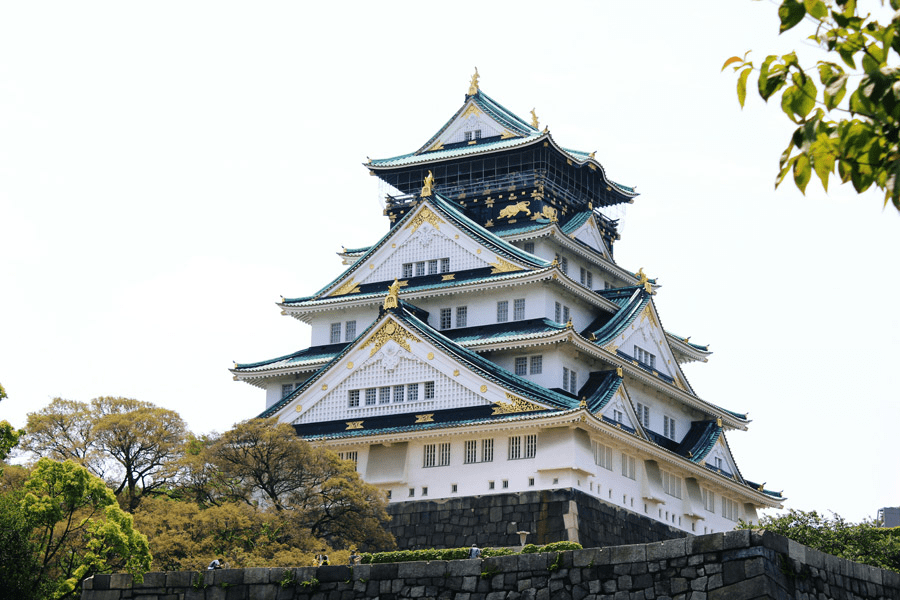
Estimated time required for sightseeing: About 2 hours
Osaka Castle was built in the late 1500s by the warrior Hideyoshi Toyotomi, who aimed to unify the nation. It has since undergone repeated destruction and reconstruction, and the current "Tenshu" (the building that symbolizes the castle) was rebuilt in 1931 using steel-reinforced concrete construction.
The exterior is a building with solid and graceful beauty, while the interior functions as a history museum with material exhibits. Osaka Castle has been advancing a project to excavate and publicly display the stone walls of the original Osaka Castle, and this has been open to the public since April 1, 2025. You can see stones that have turned red, believed to be burn marks from the battle in 1615, providing a valuable experience.
Address: 1-1 Osaka Castle, Chuo-ku, Osaka City, Osaka Prefecture
Operating hours: 9:00-18:00
Closed: December 28 - January 1
Phone number: 06-6941-3044
Official website: https://www.osakacastle.net/
More Detailed Information About "Perfect Guide to Osaka Jo Castle"
・Osaka Jo Castle (Osaka Castle) w/Access, Ticket, Admission fee
Umeda Station Area
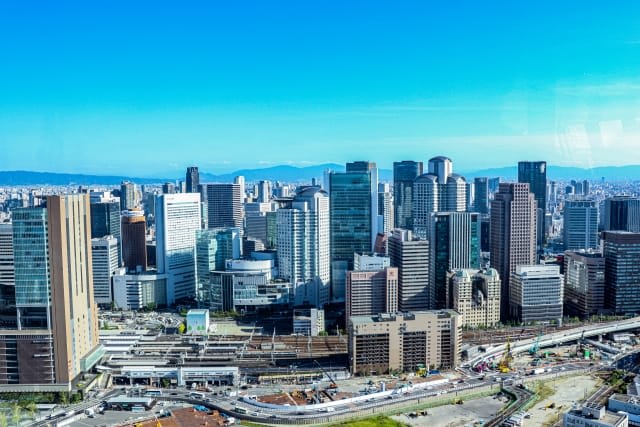
Estimated time required for sightseeing: 1.5 hours to half a day
Umeda Station serves as the gateway to Osaka and is a transportation hub, while simultaneously being an urban area where you can enjoy sightseeing, shopping, and dining - making it an ideal stop for any Osaka, Kyoto & neighbors 3-day itinerary.
There's the eye-catching Umeda Sky Building with its futuristic glass exterior and bold atrium structure, and from its Floating Garden Observatory, you can overlook Osaka's urban area.
Large commercial facilities line the area within walking distance, including GRAND GREEN OSAKA, LUCUA, and GRAND FRONT OSAKA, which are well-equipped with attractive shops and restaurants.
A key point is that the entire Umeda area is directly connected through underground passages and connecting walkways, designed for comfortable movement even on rainy days.
Since you can find everything from dining to shopping in Umeda, please be sure to stop by during breaks in your sightseeing or meal times.
More Detailed Information About "Sightseeing around Umeda Station Area"
・Umeda Perfect Guide: Discover the Heart of Osaka's Urban Adventure
・Enjoy Grand Front Osaka! Shopping Guide of Osaka's Entrance
Afternoon (PM1:00-4:00): Shinsaibashi and Namba
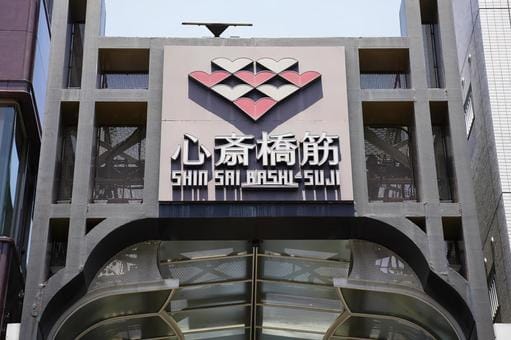
It's about 20-30 minutes by subway from Kaiyukan to the Shinsaibashi area. The Shinsaibashisuji Shopping Street is Osaka's premier shopping arcade, lined with fashion brands and variety stores.
At Kuromon Market, you can enjoy food-hopping through fresh seafood and Osaka specialty foods. I particularly recommend enjoying conversations with market workers while sampling foods. Even if you don't understand Japanese, you can experience Osaka's friendly communication style through simple English and gestures.
In Amerikamura, the youth culture hub, you can experience street fashion and pop culture. For those interested in Japanese pop culture, I also highly recommend "Den Den Town" in Nipponbashi. It's a major district full of specialty stores selling electronics and anime goods.
More Detailed Information About "Sightseeing around Namba"
・Namba Guide: Your Complete Guide to Osaka's Vibrant District
More Detailed Information About "Shopping at Kuromon Market"
・Kuromon Market Guide: The Ultimate Guide to Osaka's Kitchen
Evening (PM4:00-8:00): Dotonbori
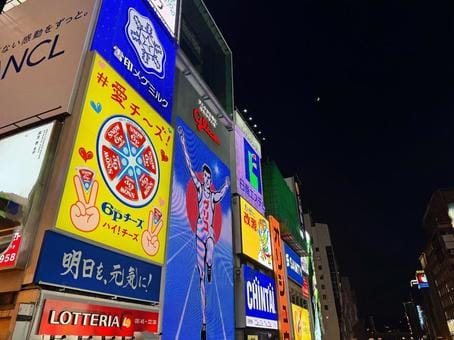
Dotonbori, a short walk from Shinsaibashi, is the heart of Osaka's food culture. First, take a commemorative photo at Osaka's landmark "Glico Sign." Then, I recommend comparing different takoyaki and okonomiyaki shops. Since each shop has its own unique taste and batter texture, I suggest trying multiple places.
At night, you can experience Osaka's izakaya culture in Hozenji Yokocho. In the narrow alley lined with atmospheric izakayas, you can enjoy interactions with locals. Finally, take a stroll along the illuminated Dotonbori River. The brilliant night view will be a fitting end to your journey.
More Detailed Information About "Attractions of Dotonbori"
・Dotonbori Ultimate Guide: Must-Try Foods and Way to Find Restaurants Truly Beloved by Locals
More Detailed Information About "Drinking in Hozenji Yokocho"
・Hozenji Yokocho Alley: Osaka's Popular Drinking District
To conclude your Kyoto and Osaka trip, enjoy delicious Osaka food with locals who know Osaka thoroughly. When you visit Osaka, be sure to enjoy the excellent Osaka foods like okonomiyaki and takoyaki.
・Osaka Local Foodie Tour in Dotonbori and Shinsekai
・Osaka Bar Hopping Night Tour in Namba

A 3-day journey through Kyoto and Osaka offers a luxurious experience where you can enjoy the unique charm of Japan's tradition and modernity intertwined. In Kyoto, you'll touch ancient history and culture, while in Osaka, you'll feel the pulse of a vibrant city.
I've crafted this itinerary based on my experience to maximize the appeal of both cities. I encourage you to create your own memorable journey by flexibly adjusting the schedule according to the season and weather.
When planning your trip, I recommend checking each facility's business hours and crowd conditions in advance. For popular spots, I particularly suggest early morning visits are best.
I hope this itinerary helps make your Kansai journey wonderful!
5 Recommended Tourist Destinations Around Kyoto/Osaka to Enhance Your 3-day Itinerary!
This time, we introduced a 3-day model plan touring Kyoto and Osaka, but travel styles vary from person to person. There must be those who are staying for more than 3 days or those who want to efficiently extend their journey to surrounding areas.
For such travelers, we'll introduce recommended tourist destinations that are perfect to incorporate into your Osaka, Kyoto & neighbors 3-day itinerary. Please use the information introduced here as reference to make your itinerary even more fulfilling.
Nara Prefecture
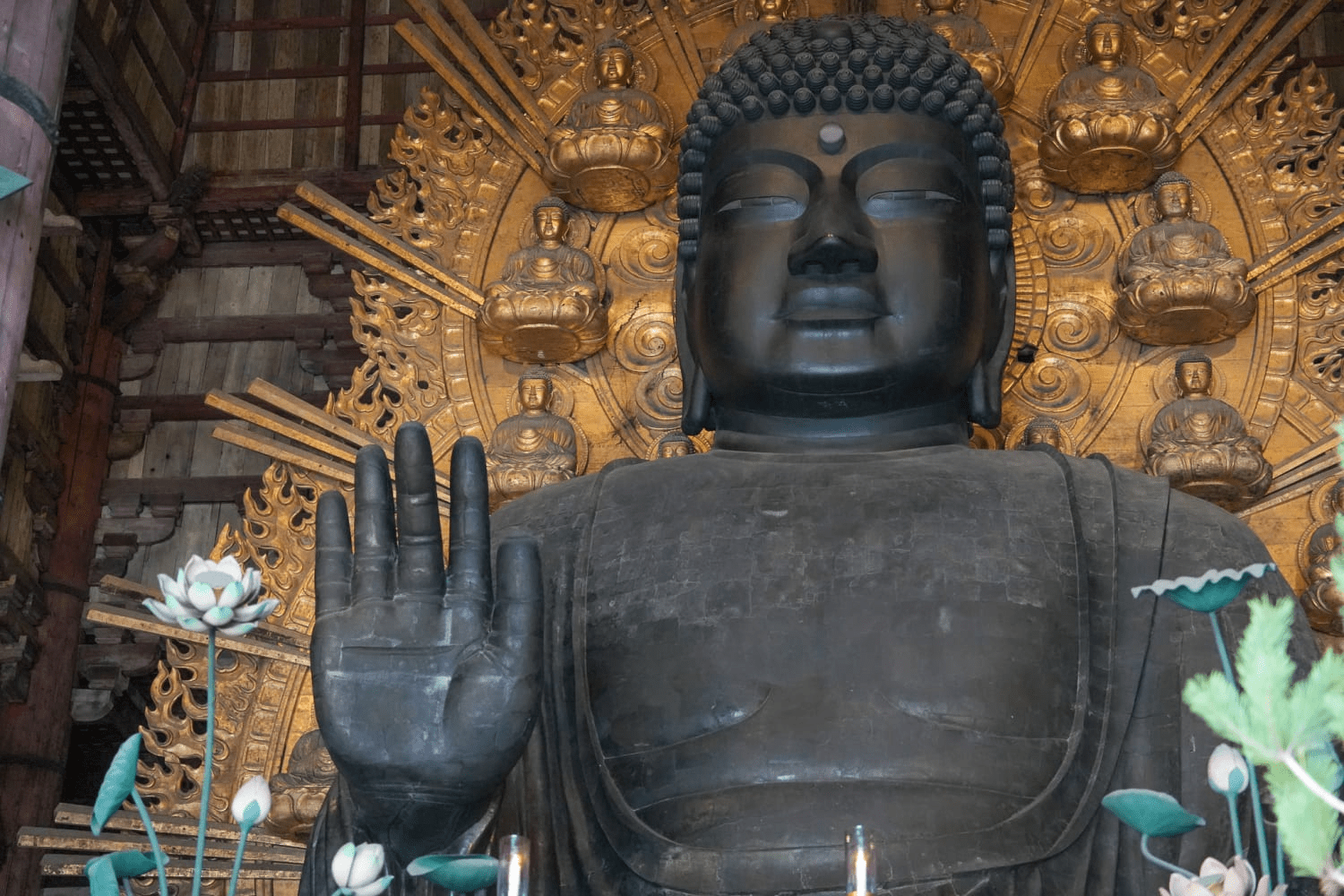
Nara Prefecture has excellent access from Kyoto and Osaka, about 1 hour by train, making it suitable for day trips.
It has a history of once being the capital of Japan, and the atmosphere of an ancient capital remains strongly preserved. Nara Park is particularly famous, and the experience of interacting with wild deer that roam freely is a uniquely charming attraction found only here.
Within the park stands Tōdai-ji Temple, where you can view the Big Buddha statue that stands over 15 meters tall in the Great Buddha Hall, known as one of the world's largest wooden structures.
The unique atmosphere where historical architecture, nature, and the coexistence of people and animals creates an experience that's quite different from Kyoto or Osaka.
Tōdai-ji Temple
A large-scale Buddhist temple built in 745, located within Nara Park and registered as a World Cultural Heritage site.
It's famous for the massive Big Buddha statue housed in the Great Buddha Hall, which is one of the world's largest wooden structures at 15 meters in height.
As a place symbolizing Japanese Buddhist culture, it's popular with tourists both domestic and international, making it an unmissable spot when visiting Nara Prefecture.
Address: 406-1 Zoshicho, Nara City, Nara Prefecture
Operating Hours:
April - October: 7:30 - 17:30
November - March: 8:00 - 17:00
Closed: None
Phone: 0742-22-5511
Kasuga Taisha Shrine
Established in 768, Kasuga Taisha Shrine is characterized by its vermillion-painted buildings and approximately 3,000 Japanese-style lanterns called "Toro" lined up on the grounds.
During the annual "Mandoro" event held every August, all the lanterns on the grounds are lit, creating a fantastical landscape. I've visited there myself, and you can enjoy a special feeling as if you've traveled back in time.
Address: 160 Kasugano-cho, Nara City, Nara Prefecture
Operating Hours:
March - October: 6:30 - 17:30
November - February: 7:00 - 17:00
Closed: None
Phone: 0742-22-7788
Official Website: https://www.kasugataisha.or.jp/
Kōfuku-ji Temple
A historic temple located in central Nara City. The five-story pagoda is famous as a symbol of Nara and is known as Japan's second-tallest wooden tower.
The National Treasure Hall on the temple grounds displays many Buddhist statues, including the Asura statue with three faces and six arms, making it a spot of extremely high artistic value. It's a recommended place for those who love history and Eastern art.
Address: 48 Noboriojicho, Nara City, Nara Prefecture
Operating Hours: 9:00 - 17:00
Closed: None
Phone: 0742-22-7755
Official Website: https://www.kohfukuji.com/
More Detailed Information About "Day Trip from Kyoto to Nara"
・The Perfect Kyoto to Nara Day Trip: Complete Itinerary with Map (2025 Guide)
Kobe (Hyogo Prefecture)
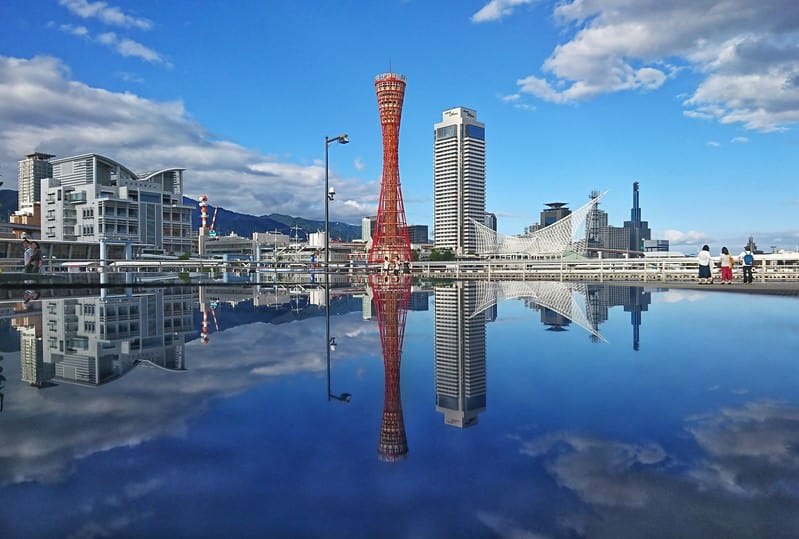
Kobe is close to Osaka, about 30 minutes by train, and is a city where you can enjoy the sophisticated atmosphere unique to a port town.
Since its opening as a port, it has developed by incorporating foreign cultures, so the cityscape is filled with exotic charm. One of the representative tourist destinations is Kitano Foreigner's Houses, where Western-style residences built around 1890 line up, conveying the history of international exchange from that era to the present.
Additionally, the area around Kobe Port is well-equipped with shopping and restaurants, and at night, the port's night view and illuminated Ferris wheel create beautiful scenery.
By incorporating Kobe, where culture, nature, and gourmet food are well-balanced, into your Osaka, Kyoto & neighbors 3-day itinerary, you can have an even more diverse experience.
Kitano Ijinkan District
An area that developed as a foreign settlement around 1890, where many Western-style residences from that time remain. The red-brick and wooden Western-style buildings are still open to the public, and you can see furniture and furnishings from that era inside.
The Ijinkan District, built along slopes, is a spot where you can experience the history of Kobe's journey as an international port city.
Some buildings have become cafes and restaurants, so you can enjoy meals while spending time leisurely.
Address: Kitano-cho, Chuo-ku, Kobe City, Hyogo Prefecture
Operating Hours: Varies by store
Closed: Varies by store
Phone: 078-251-8360 (Kitano Tourist Information Center)
Official Website: https://www.kobeijinkan.com/
Kobe Harborland
A complex area spreading along Kobe Port, featuring shopping malls, restaurants, and a Ferris wheel.
At night, the illuminated Kobe Port Tower and port night view are beautiful, making it popular with couples and families. Seaside walks and views from cruise ships are also among its attractions, enjoyable both day and night.
It's popular not only with tourists but also as an area where locals visit on holidays.
Address: 1-chome, Higashikawasaki-cho, Chuo-ku, Kobe City
Operating Hours: Varies by store
Closed: Varies by store
Phone: 078-360-3639
Official Website: https://harborland.co.jp/
Mt. Rokko
A nature-rich mountain easily accessible from the city center, where you can overlook the Kobe cityscape and Osaka Bay from the 931-meter summit.
The night view is particularly beautiful, called the "million-dollar night view," and is famous as one of Japan's three great night views. The nature throughout the four seasons is also attractive, and in winter you can enjoy skiing and illuminations.
It's also familiar to locals as a romantic date spot.
Address: Mt. Rokko, Arima-cho, Kita-ku, Kobe City, Hyogo Prefecture
Operating Hours: Varies by facility
Closed: Varies by facility
Phone: Varies by facility
Official Website: https://www.rokkosan.com/top/
More Detailed Information About "Day Trip from Osaka to Himeji in Hyogo"
・Perfect One-Day Himeji Castle Trip from Osaka: Complete Itinerary & Travel Guide (2025)
Mt. Hiei

Mt. Hiei is an 848-meter mountain towering on the border between Kyoto and Shiga Prefecture, revered as an object of worship since ancient times.
The main highlight is the UNESCO World Heritage-listed Enryaku-ji Temple, established in 788 as the head temple of the Buddhist sect called Tendai. Many Buddhist sects in Japan are said to have been influenced by this temple, making its historical value immense.
The grounds are vast, with important buildings and Buddhist statues scattered throughout. Mt. Hiei is also renowned for its panoramic views, offering spectacular vistas of Kyoto city and Shiga Prefecture's famous lake, Lake Biwa.
The East Pagoda
This is the central area of Mt. Hiei, located within Enryaku-ji Temple. Known as the head temple of the Tendai sect established in 788, it houses the "Eternal Dharma Lamp" that has been burning continuously for 1,200 years.
The reason the light never goes out is because monks add rapeseed oil every morning and evening to keep it burning. The East Pagoda has played an important role in Buddhist history and is visited by many worshippers.
Address: Enryaku-ji Temple, Sakamoto Honcho, Otsu City, Shiga Prefecture
Business Hours: 9:00-16:00
Closed: None
Phone: 077-578-0001
Official Website: https://www.hieizan.or.jp/keidai/toudou
Hiyoshi Taisha Shrine
Located at the foot of Mt. Hiei, this is an extremely ancient shrine said to have been built in 91 BC. It features a unique architectural style called "Hiedukuri," where only the rear of the building lacks eaves - an architectural style that can only be seen here.
The vermillion-painted gates, stone bridges, and natural landscape spreading throughout the grounds are beautiful, and it's particularly known as a famous autumn foliage spot.
I once visited during the illumination period for autumn leaves, and the sight of the historically atmospheric space gently lit up was truly fantastical.
Address: 5-1-1 Sakamoto, Otsu City, Shiga Prefecture
Business Hours: 9:00-16:30
Closed: None
Phone: 077-578-0009
Official Website: https://hiyoshitaisha.jp/
Biwako Terrace
This is an observation facility located about 30 minutes by car from Mt. Hiei, situated at the summit of a mountain. From approximately 1,100 meters above sea level, you can overlook Lake Biwa with spectacular views changing through the four seasons.
Wooden decks and infinity lounges are installed, and sitting on the infinity lounge sofas gives you an experience as if floating in the sky. You can also enjoy light meals and drinks exclusive to the lounge, as well as gourmet cuisine using ingredients from Shiga Prefecture.
Address: 1547-1 Kido, Otsu City, Shiga Prefecture
Business Hours: 9:30-17:00 (Weekends and holidays 9:00-)
Closed: Seasonal closures
Phone: 077-592-1155
Official Website: https://www.biwako-valley.com/tips/biwako_terrace/
More Detailed Information About "Day Trip from Kyoto to Mt.Hiei"
・Mt. Hiei Day Trip from Kyoto: Complete Itinerary for Enryakuji Temple, Cable Car Rides & Lake Biwa Views (2025 Guide)
Mt. Koya

Mt. Koya is a sacred site of the Shingon sect spreading across the mountains of Wakayama Prefecture on the Pacific side, and is a special place where you can deeply experience Japanese Buddhism.
It was established in 816 by a person named "Kukai" who founded the Shingon sect, and approximately 120 temples are gathered here, still serving as a center of training and faith today.
At Mt. Koya, you can stay within temples, taste vegetarian cuisine called "Shojin Ryori" made according to Buddhist teachings, and participate in Buddhist ceremonies held in the morning - experiences unavailable elsewhere.
From Osaka, it takes about 2 hours by train and cable car, making day trips possible, but staying overnight allows you to feel its charm more deeply.
Okunoin
This is Mt. Koya's greatest sacred site, where Kukai's mausoleum is located. The path leading there is lined with over 200,000 stone towers and memorial towers, and many graves of historical military commanders and famous people can be seen.
Even during the day, a solemn atmosphere pervades the forest-wrapped area, where you can strongly feel the weight of faith and history. I have visited there myself, and it was a reverent place where I felt some kind of special atmosphere.
Address: 550 Koyasan, Koya-cho, Ito-gun, Wakayama Prefecture
Business Hours:
Summer (May-October) 8:00-17:00
Winter (November-April) 8:30-16:30
Closed: None
Phone: 0736-56-2468
Official Website: None
Danjo Garan
This is the temple that Kukai first developed when creating Mt. Koya, built together with his disciples and completed in 817. The vermillion tower is symbolic, but many other towers stand in rows, and many monks continue their training here as the religious center of Mt. Koya.
All buildings have meaning embedded in them, and the rule is to turn your right shoulder toward the building with Buddhist statues and walk clockwise.
Address: 152 Koyasan, Koya-cho, Ito-gun, Wakayama Prefecture
Business Hours: 8:30-17:00
Closed: None
Phone: 0736-56-3215
Official Website: None
Kongobu-ji Temple
This is the head temple of the Shingon sect and has a history of being built by Hideyoshi Toyotomi. The vast grounds contain Japan's largest stone garden, expressing the form of dragons with white sand and stones.
The sight of stone dragons on both sides of the garden is very impressive. There are also many artistic works such as paintings drawn on Japanese sliding doors called "Fusuma," making it a place with both religious value and artistic appeal.
Address: 132 Koyasan, Koya-cho, Ito-gun, Wakayama Prefecture
Business Hours: 8:30-17:00
Closed: None
Phone: 0736-56-2011
Official Website: https://www.koyasan.or.jp/
More Detailed Information About "Day Trip from Kyoto to Mt.Koya"
・The Ultimate One-Day Itinerary from Kyoto to Koyasan: Experience Japan's Sacred Mountain (Complete Transportation Guide & Must-Visit Temples)
Amano Hashidate

Amano Hashidate is one of Japan's three scenic views located in northern Kyoto, where a beautiful sandbar called "a bridge hanging in heaven" stretches approximately 3.6km across the bay.
The narrow path lined with pine trees can be explored on foot or by rental bicycle, allowing you to enjoy refreshing scenery surrounded by sea and greenery.
Particularly famous is the viewing method called "Matanozoki (means 'Looking between your legs')," where bending over and looking through your legs makes the sandbar appear like a dragon ascending to heaven. From Kyoto city center, it's about 2 hours by train and accessible for day trips, so with a little extension, you can enjoy a different side of Kyoto from the urban areas.
Amanohashidate View Land
This is an observation facility located on the mountain south of Amano Hashidate, easily accessible by lift or monorail. The view from here is said to make the sandbar look like a dragon soaring into the sky.
I also visited there and was moved by the spectacular view that really looked like a dragon. There are also a Ferris wheel and attractions, making it enjoyable for families.
Address: 437 Monju, Miyazu City, Kyoto Prefecture
Business Hours:
February 16 - June 30: 9:00-17:00
July 1 - July 15: 9:00-17:30
July 16 - September 15: 8:30-18:00
September 16 - September 30: 9:00-17:30
October 1 - November 15: 9:00-17:00
November 16 - February 15: 9:00-16:30
Closed: None
Phone: 0772-22-1000
Official Website: https://www.viewland.jp/
Kasamatsu Park
This is an observation spot located on the north side of Amano Hashidate, famous as the birthplace of "Matanozoki." The observation deck has a sky deck with glass railings and glass floor sections, and I visited there too - it was thrilling!
There's also an observation restaurant, so you can leisurely enjoy the scenery while dining from inside the restaurant with large windows. From the observation deck, you can also see the Sea of Japan and Miyazu Bay, with refreshing views spreading out.
Address: Ogaki, Miyazu City, Kyoto Prefecture
Business Hours: 8:00-17:30 (April-October)
Subject to seasonal changes
Closed: None
Phone: 0772-27-0032
Official Website: None
Chion-ji Temple
Located at the entrance of Amano Hashidate, this is a historic temple built in 904 that enshrines the guardian deity of learning.
Japan has a famous saying "Three heads are better than one," and the god of wisdom from which this saying originates is enshrined here, attracting many students and exam-takers for worship.
The ring-shaped stone lantern within the grounds is also famous, and it's said that walking around it three times will make you smarter. Please give it a try!
Address: 466 Monju, Miyazu City, Kyoto Prefecture
Business Hours: 8:00-17:00
Closed: None
Phone: 0772-22-2553
Official Website: https://www.monjudo-chionji.jp/
More Detailed Information About "Day Trip from Kyoto to Amano-Hashidate"
・Perfect One-Day Itinerary: Kyoto to Amanohashidate – Complete Guide to Japan's Heavenly Bridge (2025)


